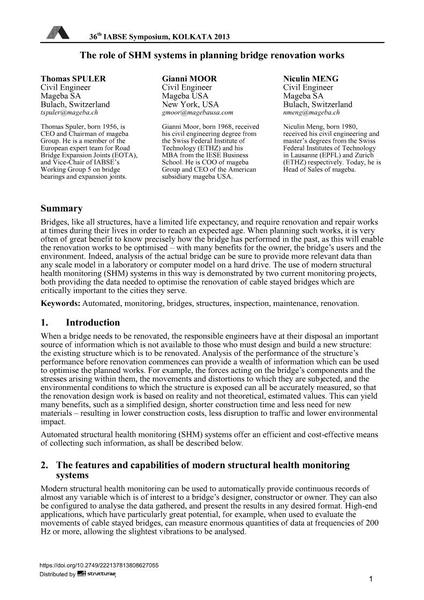The role of SHM systems in planning bridge renovation works

|
|
|||||||||||
Bibliografische Angaben
| Autor(en): |
Thomas Spuler
Gianni Moor Niculin Meng |
||||
|---|---|---|---|---|---|
| Medium: | Tagungsbeitrag | ||||
| Sprache(n): | Englisch | ||||
| Tagung: | IABSE Symposium: Long Span Bridges and Roofs - Development, Design and Implementation, Kolkata, India, 24-27 September 2013 | ||||
| Veröffentlicht in: | IABSE Symposium Kolkata 2013 | ||||
|
|||||
| Seite(n): | 1-8 | ||||
| Anzahl der Seiten (im PDF): | 8 | ||||
| Jahr: | 2013 | ||||
| DOI: | 10.2749/222137813808627055 | ||||
| Abstrakt: |
Bridges, like all structures, have a limited life expectancy, and require renovation and repair works at times during their lives in order to reach an expected age. When planning such works, it is very often of great benefit to know precisely how the bridge has performed in the past, as this will enable the renovation works to be optimised – with many benefits for the owner, the bridge’s users and the environment. Indeed, analysis of the actual bridge can be sure to provide more relevant data than any scale model in a laboratory or computer model on a hard drive. The use of modern structural health monitoring (SHM) systems in this way is demonstrated by two current monitoring projects, both providing the data needed to optimise the renovation of cable stayed bridges which are critically important to the cities they serve. |
||||
| Stichwörter: |
Brücken Tragwerke Wartung Bauwerksprüfung Monitoring
|
||||
